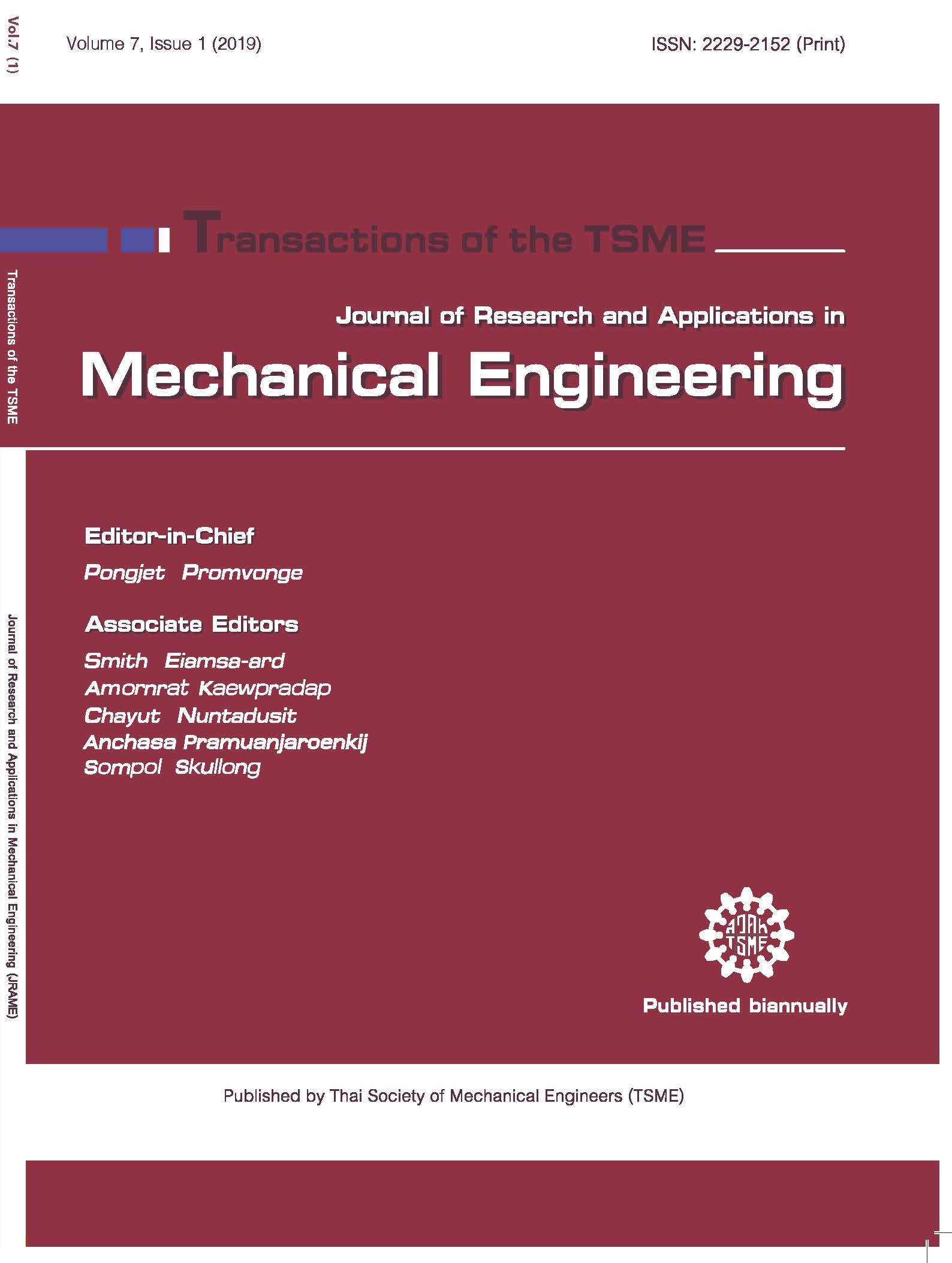Blockage effects on resistance prediction of high-speed catamarans
Main Article Content
Abstract
Model experiment is the most reliable method to estimate ship resistance; however, price and complexities are the most disadvantage factors. Another aspect that affects the precision of the results are blockage effects due to tank dimension and model size. Some correction procedures introduced by ITTC are widely used. However only resistance components that can be corrected while flow field and wave elevation cannot be justified using the blockage correction procedures. To demonstrate how the blockage affects the flow around catamaran, this study focuses on resistance prediction and flow characteristics around high-speed catamarans using CFD code with RANS equations. Two Southampton University towing tanks – Solent and Boldrewood – are compared. The NPL 5b model is used as it is widely investigated and used in the commercial applications. Four Froude numbers (Fn = 0.273, 0.433, 0.70 and 0.90) are investigated. CFD results show that resistance components measured from the higher blockage towing tank are higher than the bigger tank. Wave contour plots and wave cut show that the higher blockage towing tank causes the higher wave elevation due to the reflection of the wall which results in differences for the wave resistance prediction between the two towing tanks.
Article Details
This work is licensed under a Creative Commons Attribution-NonCommercial-ShareAlike 4.0 International License.
References
[2] Hughes, G. The effect of model and tank size in two series of resistance tests, T.I.N.A., 1957.
[3] Taniguchi, K. and Tamura, K. Study of the tank boundary effect on model resistance (in Japanese), Journal of S.N.A. of West Japan, No. 9, 1955.
[4] Taniguchi, K. and Tamura, K. On the blockage effect, experimental tank, Mitsubishi shipbuilding and engineering Co., Report No. 307, 1958.
[5] Scott, J.R. On blockage correction and extrapolation to smooth ship resistance, T.I.N.A., 1970.
[6] Tamura, K. Study on the blockage correction, Journal of the Society of Naval Architects of Japan, No.131, 1972, pp. 17-28.
[7] Haase, M., Zurcher, K., Davidson, G., Binns, J.R., Thomas, G. and Bose, N. Novel CFD-based full-scale resistance prediction for large medium-speed catamarans, Ocean Engineering, Vol. 111, 2016, pp. 198-208.
[8] Insel, M. An investigation into the resistance components of high-speed displacement catamarans. PhD Thesis, 1990, University of Southampton, Southampton.
[9] Molland, A.F., Wellicome, J.F. and Couser, P.R. Resistance experiment on a systematic series of high-speed displacement catamaran froms: Varian of length-displacement ratio and breadth-draught ratio. Ship Science Report 71, Southampton: University of Southampton, 1996.
[10] Srinakaew, S., Taunton, D.J. and Hudson, D.A. A study of resistance of high-speed catamarans and scale effects on form factor, paper presented in Proceeding of the 19th Numerical Towing Tank Symposium (NUTTS’16), 2016, St Pierre d’Oleron, France.



